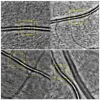Multimodal Imaging of Diabetic Retinopathy: Insights from Optical Coherence Tomography Angiography and Adaptive Optics
- PMID: 40722482
- PMCID: PMC12293671
- DOI: 10.3390/diagnostics15141732
Multimodal Imaging of Diabetic Retinopathy: Insights from Optical Coherence Tomography Angiography and Adaptive Optics
Abstract
Background/Objectives: To investigate the role of multimodal imaging, specifically optical coherence tomography angiography (OCTA) and adaptive optics (AO), in the diagnosis and monitoring of diabetic retinopathy. Methods: Our study represents an observational, cross-sectional analysis including sixty-nine patients from four distinct groups: a control group (17 patients), diabetic patients without diabetic retinopathy (no DR) (14 patients), diabetic patients with non-proliferative diabetic retinopathy (NPDR) (18 patients), and diabetic patients with proliferative diabetic retinopathy (PDR patients). A comprehensive ophthalmological evaluation, along with high-resolution imaging using OCTA and AO, was performed. OCTA images of the superficial capillary plexus, acquired with the OCT Angio Topcon, were analyzed using a custom-developed MATLAB algorithm, while AO retinal vascular images were evaluated with the manufacturer's software of the Adaptive Optics Retinal Camera rtx1™. Results: Our findings demonstrated statistically significant reductions in foveal avascular zone circularity, superficial capillary plexus density, vessel length density, and fractal dimension, correlating with the severity of diabetic retinopathy, particularly in the PDR. Additionally, mean wall thickness and wall-to-lumen ratio were significantly increased in patients with diabetic retinopathy, notably in PDR. Conclusions: In conclusion, our findings demonstrate that the combined use of OCTA and AO imaging offers complementary insights into the microvascular alterations associated with diabetic retinopathy progression and severity. These high-resolution modalities together reveal both perfusion deficits and structural vascular changes, underscoring their utility as essential tools for early detection, staging, monitoring, and informed management of DR.
Keywords: adaptive optics ophthalmoscopy; diabetic retinopathy; optical coherence tomography angiography.
Conflict of interest statement
The authors declare no conflicts of interest.
Figures






References
-
- Ogurtsova K., da Rocha Fernandes J.D., Huang Y., Linnenkamp U., Guariguata L., Cho N.H., Cavan D., Shaw J.E., Makaroff L.E. IDF Diabetes Atlas: Global estimates for the prevalence of diabetes for 2015 and 2040. Diabetes Res. Clin. Pract. 2017;128:40–50. doi: 10.1016/j.diabres.2017.03.024. - DOI - PubMed
LinkOut - more resources
Full Text Sources

